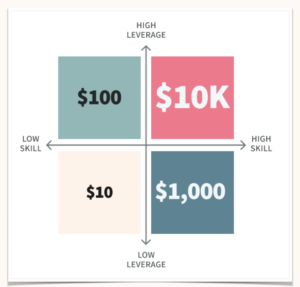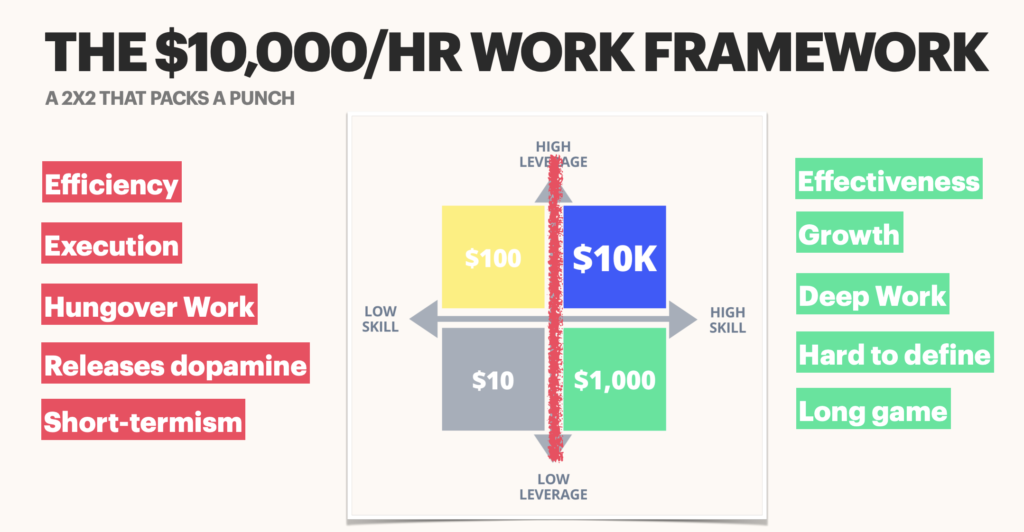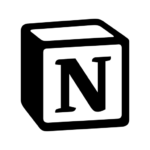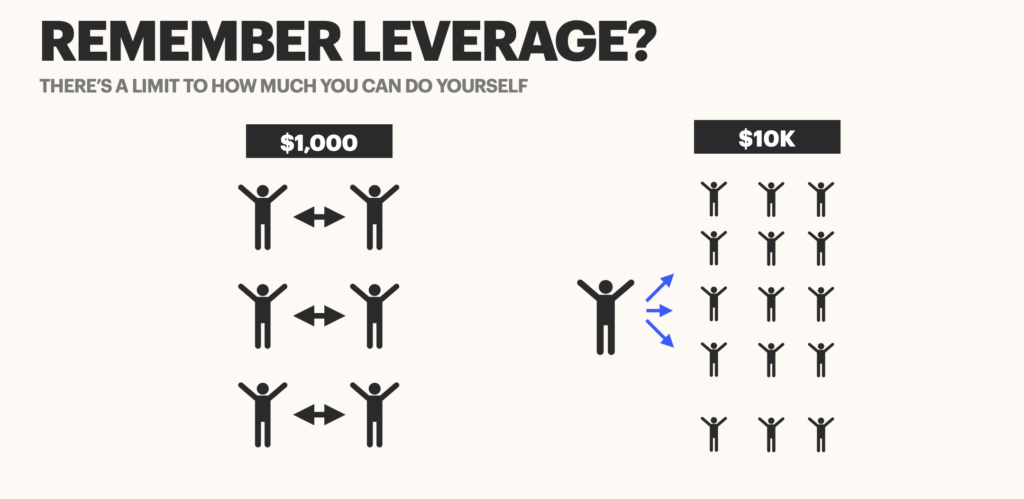Continuing the topic about the $10,000/HR Bootcamp by Khe Hy which I gave an overview last time (see my blog post), today’s blog post we dive in to the Day 1 of the bootcamp.
The topic is all about leverage. As said in the course outline:
Day 1 – The Art Of Leverage
Learn how to identify high-leverage activities that span all industries and professions and how you can apply leverage to fast-track your career and grow your business.
So let’s get into it.
First important thing that I learned from Day 1’s bootcamp is the work leverage framework.

It’s a simple 2×2 matrix, something similar to the Eisenhower matrix, cashflow quadrant (if you are a fan of Robert Kiyosaki). On one axis we have high leverage, low leverage. We also have High skill and low skill work on the other side of the axis.
For a better understanding, Khe Hy shared that people that are watching his videos at the middle of the day live, wherein people are joining for a zoom meeting in the middle of the day, were people that are highly skilled, and that people in the group are presumably knowledge workers. He assumed that we (I included myself) have a unique skill.
The goal then now is how to take this unique skill, and how to amplify it.
He then started to split the framework.

By giving a high-level overview of the difference between the parts of the matrixes, Khe Hy then proceeded to break down the different kinds of work for each of the matrices.
The $10 Work
- Getting to Inbox Zero (For GTD Fans)
- Organising Email Inbox
- Social Media Checking
- Formatting of Excel sheets (column widths, decimal places, etc)
The $100 Work
Tools


Systems


The thing is, if you only implement these, will you actually get to where you want to be in life? Will you be able to achieve your goals by only implementing the using the tools and systems?
Automation is good, getting things done is good, but as mentioned, if you don’t do the right things, then you won’t get to where you want to be.
Although to be honest, there was a point in my life that I was also really focusing on these things. Personally I am implementing GTD and Trello and they help me a lot with my work, but back then I focused too much on learning the ins and outs of the tools that I lost track of the goals that I need achieve and the actual action items I need to take.
These things can make you feel productive, but are they really helping you to go to where you want to go?
The $1k Work
Being part of the 1k workers means that you have a unique skill that the market wants. Khe Hy reiterated that the people interested in the bootcamp are people that have a unique skill, else they wouldn’t be interested in the topic.
You have the capability already to be highly paid since the market rewards people that are highly skilled knowledge workers. Examples he mentioned are lawyer, doctors, financial analyst, consultant and programmer.
But the thing is, being in this matrix still has a catch. You do get paid relatively a lot, but you get paid by the time you put in. If you exhausted your annual leaves, your income will be affected.
The $10k Work
Another thing would be a blog posts. These have the potential to also reach a lot of people.

One thing I intend incorporate in my productivity system is to identify under what matrix is a task I am doing.
With that, I will be able to track how much $10, $100, $1k, $10k work I do in a day, in a week, etc.
For example if you tried tracking your daily work and you noticed that most of your work comes into the $10 category, then you aren’t doing enough impactful things.
It’s also important to identify at which point of the day you do the work. If for example you are most productive within the morning, but you do not do your 10k work during that time, then you aren’t fully utilising your plans.
What you should do then is to identify your task type, schedule them in your most productive timing, then follow the plan and execute. Do your $10k work in your most productive time.
For me moving forward, I will make sure to properly schedule my work. My most productive timings are early morning, so I will put in my 10k work in this schedule.
This concludes my entry about the Day 1 of the bootcamp. There are really a lot of things to learn so I highly recommend you to watch the video, understand the theories and whys, and of course, implement and take action.